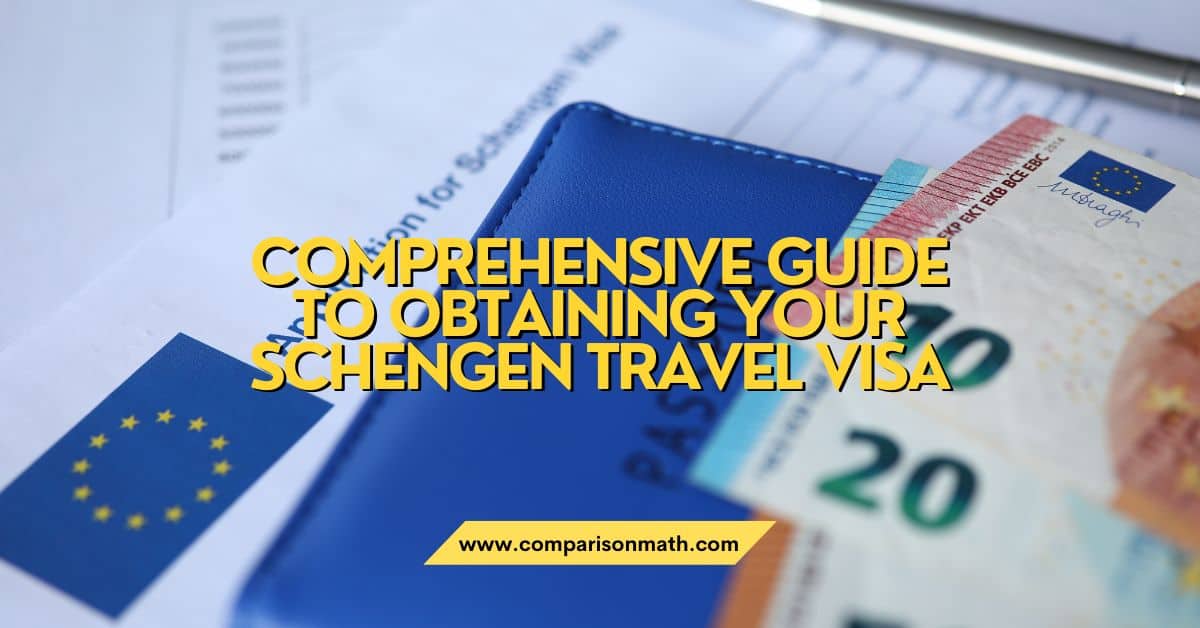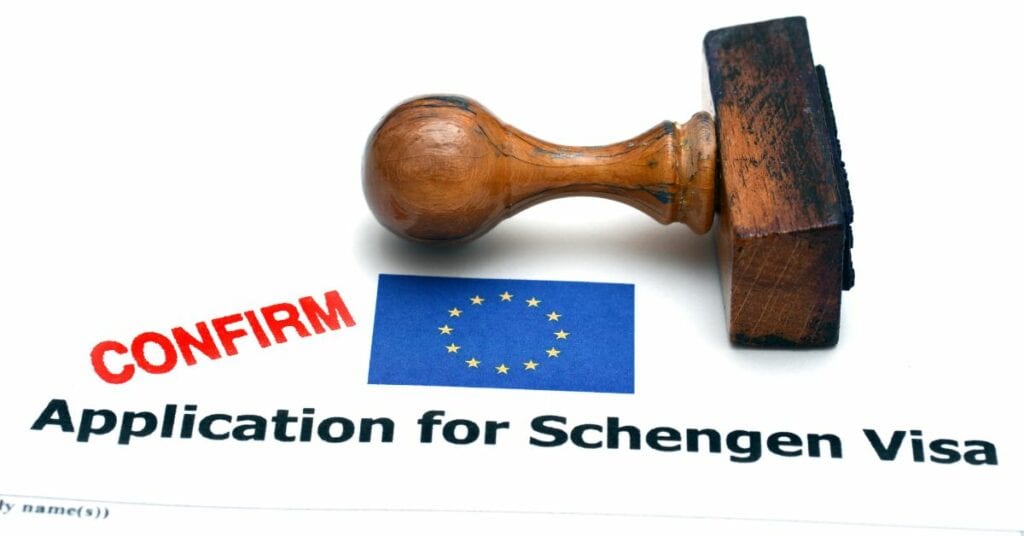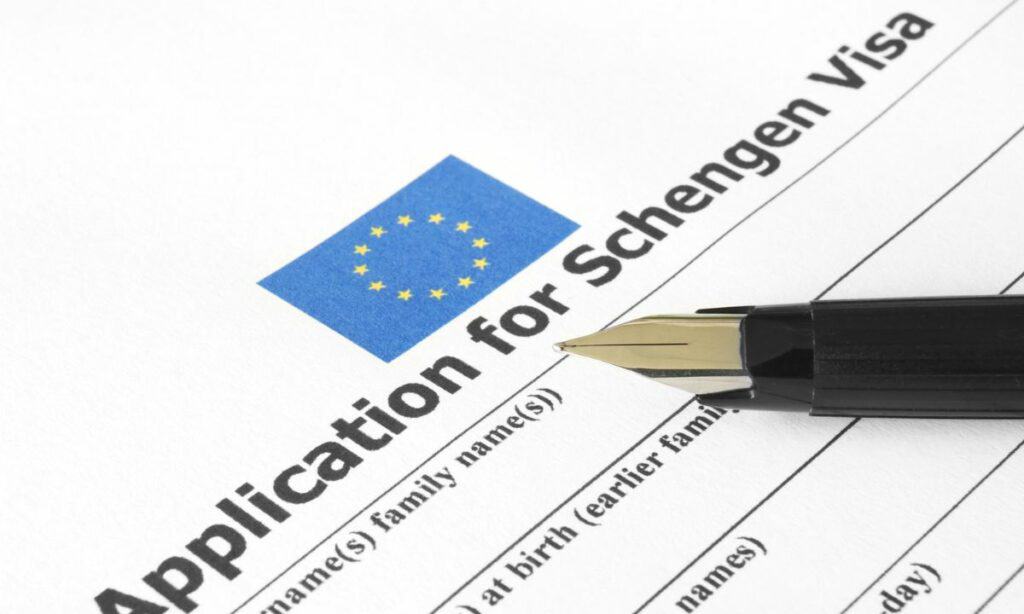Physical Address
304 North Cardinal St.
Dorchester Center, MA 02124

Embarking on a European adventure? If you’re planning to visit multiple countries within the Schengen Zone, you’ll need a Schengen travel visa. However, navigating the visa application process may feel daunting and complex. Don’t worry, we’ve got you covered! In this ultimate guide, we’ll walk you through each step to help you obtain that coveted Schengen travel visa hassle-free.

From gathering the necessary documents to filling out the application form and booking your appointments, we’ll provide you with invaluable tips and tricks to maximize your chances of success. We’ll also cover common pitfalls to avoid and address frequently asked questions, so you can feel fully prepared and confident in your application.
Our mission is to simplify the complex and empower travellers like you to explore the beautiful countries of Europe with ease. Whether it’s the enchanting streets of Paris, the historic landmarks of Rome, or the scenic landscapes of Switzerland, obtaining a Schengen travel visa will be your passport to unforgettable experiences. So, let’s dive in and make your European dream a reality!
A Schengen travel visa is a document that allows non-EU citizens to enter and travel within the 26 countries that make up the Schengen Area. This area includes popular travel destinations such as France, Italy, Germany, Spain, and more. With a Schengen travel visa, you can explore multiple countries without the need for separate visas for each individual country.
The Schengen travel visa is typically issued for tourism, business, or family purposes, and it allows you to stay in the Schengen Area for a maximum of 90 days within a 180-day period. It’s important to note that the Schengen travel visa does not give you the right to work or study in the Schengen Area.
Obtaining a Schengen travel visa opens up a world of possibilities for travellers. Here are some of the key benefits:
1. Ease of travel: With a Schengen travel visa, you can freely move between the 26 countries within the Schengen Area without the need for additional visas or border controls.
2. Exploring multiple countries: The Schengen Area offers a diverse range of cultures, landscapes, and experiences. With a Schengen travel visa, you can easily hop from one country to another, making the most of your European adventure.
3. Convenience: Instead of applying for separate visas for each country you plan to visit, a Schengen travel visa allows you to cover multiple destinations with a single application.
4. Time and cost savings: By obtaining a Schengen travel visa, you can save time and money on visa applications, as well as avoid the hassle of dealing with multiple immigration procedures.
Before you can apply for a Schengen travel visa, you need to ensure that you meet the requirements set by the Schengen Area countries. While specific requirements may vary slightly from country to country, here are the general requirements:
1. Completed visa application form: You’ll need to fill out a Schengen visa application form accurately and provide all the requested information.
2. Valid passport: Your passport should be valid for at least three months beyond your intended stay in the Schengen Area. It should also have at least two blank pages for visa stamps.
3. Passport-sized photographs: You’ll need to provide recent passport-sized photographs that meet the specifications set by the Schengen Area countries.
4. Proof of travel itinerary: You’ll need to provide a detailed travel itinerary, including flight bookings, accommodation reservations, and an outline of the countries and cities you plan to visit.
5. Proof of sufficient funds: You’ll need to demonstrate that you have enough financial means to cover your expenses during your stay in the Schengen Area. This can be in the form of bank statements, sponsorship letters, or proof of employment.
6. Travel medical insurance: You’ll need to show proof of travel medical insurance that covers the entire duration of your stay in the Schengen Area. The insurance should provide a minimum coverage of €30,000 for medical emergencies and repatriation.
It’s important to note that these are general requirements, and additional documents may be required depending on the purpose and duration of your trip, as well as the specific country you plan to visit within the Schengen Area.
Applying for a Schengen travel visa may seem overwhelming, but with the right preparation, it can be a smooth and straightforward process. Here’s a step-by-step guide to help you through the application process:
1. Determine the embassy/consulate: Identify the embassy or consulate of the Schengen Area country you plan to visit first. Your application should be submitted to the embassy or consulate of the country where you will spend the most time or the country of your main destination.
2. Complete the visa application form: Fill out the Schengen visa application form accurately and legibly. Provide all the necessary information, including personal details, travel plans, and the purpose of the visit.
3. Gather the required documents: Collect all the required documents as per the specific requirements of the embassy or consulate you are applying to. This may include your passport, photographs, travel itinerary, proof of funds, and travel medical insurance.
4. Book an appointment: Schedule an appointment at the embassy or consulate to submit your application and provide biometric data (fingerprints and photographs). It’s advisable to book your appointment well in advance, as the availability may vary depending on the time of year.
5. Pay the visa fee: Pay the required visa fee, which is non-refundable, and obtain the payment receipt. The fee may vary depending on the country you are applying to and the type of visa you require.
6. Attend the visa interview: On the day of your appointment, arrive on time and be prepared for a visa interview. Answer all questions honestly and provide any additional documents requested by the visa officer.
7. Track your application: After submitting your application, you can track its progress online or by contacting the embassy or consulate. The processing time may vary, but it usually takes around 15 days.
8. Collect your passport: Once your visa application is processed and approved, you can collect your passport from the embassy or consulate. Make sure to check the visa sticker for any errors or discrepancies before leaving the premises.
While the visa application process can be rigorous, there are several tips and tricks that can increase your chances of success. Here are some valuable tips to keep in mind:

1. Start early: Begin the visa application process well in advance to allow ample time for gathering documents, booking appointments, and addressing any unforeseen delays.
2. Be organized: Keep all your documents organized and easily accessible. Make copies of all the required documents and keep them in a separate folder as a backup.
3. Provide accurate information: Double-check all the information provided in your application form, ensuring that it matches the information on your supporting documents. Any discrepancies may lead to delays or visa rejection.
4. Submit a detailed travel itinerary: Provide a comprehensive travel itinerary that includes specific dates, accommodation details, and transportation arrangements. This demonstrates that you have a well-planned trip and genuine intentions to visit the Schengen Area.
5. Show strong ties to your home country: To prove your intention to return to your home country after your trip, provide evidence of strong ties, such as employment letters, property ownership, or family commitments.
6. Be honest during the interview: During the visa interview, answer all questions honestly and confidently. It’s essential to establish credibility and demonstrate that you have genuine reasons for visiting the Schengen Area.
When applying for a Schengen travel visa, it’s crucial to avoid common mistakes that can lead to delays or visa rejection. Here are some pitfalls to watch out for:
1. Incomplete or inaccurate application: Ensure that your application form is complete and accurate. Double-check all the information provided, including dates, names, and contact details.
2. Insufficient supporting documents: Make sure to provide all the required supporting documents as per the embassy or consulate’s guidelines. Failure to do so may result in a visa rejection.
3. Inadequate financial proof: Provide sufficient evidence of your financial means to cover your expenses during your stay in the Schengen Area. This includes bank statements, sponsorship letters, or proof of employment.
4. Overstaying previous visas: If you have previously overstayed a visa in any country, it may raise red flags during the application process. Be honest about your travel history and provide explanations if necessary.
5. Lack of travel medical insurance: Ensure that you have travel medical insurance that meets the Schengen Area requirements. Without adequate coverage, your visa application may be rejected.
The processing time for a Schengen travel visa can vary depending on several factors, including the country you are applying to and the time of year. Generally, it takes around 15 days for the visa application to be processed, but it’s advisable to apply well in advance to account for any delays.
During peak travel seasons, such as summer or holidays, the processing time may be longer due to a high volume of applications. It’s essential to plan your trip accordingly and allow sufficient time for the visa application process.
The visa fee for a Schengen travel visa varies depending on the country you are applying to and the type of visa you require. As of [insert year], the standard visa fee is €80 for adults and €40 for children aged 6 to 12. Children under the age of 6 are usually exempt from paying the visa fee.
Additional fees may apply for certain visa types, such as multiple-entry visas or expedited processing. It’s important to check the embassy or consulate’s website for the most up-to-date information on fees and payment methods.
The visa interview is a crucial part of the application process, as it allows the visa officer to assess your intentions and determine your eligibility for a Schengen travel visa. Here are some tips to help you prepare for a successful interview:

1. Be prepared: Familiarize yourself with the details of your trip, including your travel itinerary, accommodation arrangements, and purpose of the visit. Be ready to answer questions related to these aspects.
2. Dress appropriately: Dress professionally and present yourself in a neat and tidy manner. This shows respect and seriousness towards the visa application process.
3. Be confident and composed: Maintain a calm and confident demeanour during the interview. Speak clearly and directly, providing concise and honest answers to the visa officer’s questions.
4. Bring necessary documents: Carry all the required documents, including your passport, supporting documents, and appointment confirmation. Present them when requested by the visa officer.
5. Answer truthfully: Be honest in your responses and provide consistent answers throughout the interview. Avoid embellishing or providing false information, as this can lead to visa rejection.
Obtaining a Schengen travel visa may seem like a complex process, but with careful planning and preparation, it can be a smooth and rewarding experience. By understanding the requirements, following the application process diligently, and avoiding common mistakes, you can increase your chances of obtaining that coveted Schengen travel visa.
Remember, the Schengen travel visa is your passport to unforgettable experiences in Europe. Whether you’re wandering through the enchanting streets of Paris, exploring the historic landmarks of Rome, or marvelling at the scenic landscapes of Switzerland, the Schengen travel visa opens up a world of possibilities.
So, start your European adventure by embarking on the Schengen travel visa application journey. With this ultimate guide as your companion, you’ll be well-equipped to navigate the process and make your European dream a reality.
As you embark on your European adventure, don’t forget to check out our “Holiday Travel Checklist” post for essential tips on packing, planning, and making the most of your time abroad. With careful preparation and a spirit of adventure, you’re sure to create unforgettable memories that will last a lifetime.
Citizens of non-Schengen countries are required to obtain a Schengen visa in order to travel to the Schengen Area for any purpose, be it tourism, business or study. The Schengen visa is a document issued by the authorities of a Schengen country, granting the holder permission to enter and stay in the Schengen Area for a limited period of time. It is a mandatory requirement that must be fulfilled by non-Schengen citizens prior to their arrival in the Schengen Area.
The validity of a Schengen visa depends on the type of visa issued. There are three types of Schengen visas:
1. Single-entry visa: This visa allows you to enter the Schengen Area once during its validity period.
2. Double-entry visa: This visa allows you to enter the Schengen Area twice during its validity period.
3. Multiple-entry visa: This visa allows you to enter the Schengen Area multiple times during its validity period.
The validity period of a Schengen visa is typically between 1 and 90 days. However, it can be shorter or longer in some cases.
Applying for a Schengen visa online can be a convenient option, but it is not universally available. The ability to apply online is dependent on the embassy to which you are submitting your application. It is important to check the embassy’s website to determine if an online application is allowed. If it is, you will be required to complete an application form and submit supporting documentation, such as your passport, travel itinerary, and proof of accommodation. Once your application has been processed, you may be asked to attend an in-person interview at the embassy or consulate, depending on the country you are applying to visit.
It is important to note that it is not possible to obtain a Schengen visa upon arrival at the border. If you plan to travel to the Schengen Area, you must apply for a visa in advance and wait for it to be approved. This means that you will need to provide all necessary documentation and meet all requirements before you can enter the Schengen Area. It is highly recommended that you apply for your visa well in advance of your travel dates to allow sufficient time for processing.
When you apply for a Schengen visa, it is possible that your application may be denied. If this happens, you will receive a reason for the denial. It is important to carefully review the reason and understand why your application was denied. If you believe that you can address the reasons for the denial, you may be able to reapply for a visa. However, please keep in mind that there is no guarantee that your second application will be approved. It is important to take the time to review and address the reasons for the denial to increase your chances of a successful visa application.
If you find yourself in a situation where you require more time to stay in a Schengen area than your Schengen visa allows, you may be able to apply for an extension. However, it’s important to note that you must have a valid reason for requesting an extension. Some valid reasons for extension may include medical emergencies, unexpected flight cancellations, and other unforeseeable circumstances beyond your control. It’s important to be aware that extending your Schengen visa is not always guaranteed, and you should apply for an extension as soon as possible to avoid any issues or complications.
Overstaying your Schengen visa is a serious offence that can result in a fine or even deportation. If you are planning on staying in the Schengen Area for longer than 90 days in a 180-day period, it is crucial that you apply for an extension of your visa, as failure to do so may result in legal consequences. The Schengen visa extension process varies depending on the country you are in but typically involves submitting an application along with supporting documents such as proof of income, Schengen travel visa insurance, and a valid reason for your extended stay. It is important to note that even with a valid extension, you must still adhere to the regulations of the Schengen Area, including not staying beyond the permitted duration and not engaging in any activities that are prohibited under the visa.
Your Schengen visa allows you to visit any of the 26 Schengen countries within the validity period of your visa. This means you can travel freely between these countries without the need for additional visas or documents. However, it’s important to note that your Schengen visa does not permit you to visit non-Schengen countries. So if you plan to travel outside the Schengen area, you will need to obtain a separate visa for the country you wish to visit.
While it is possible to travel and stay in the Schengen Area using a Schengen visa, it is not permissible to work in the region without a valid work permit. To work in the Schengen Area, you must obtain a work permit from the country where you wish to work. A work permit allows you to work legally in the country for a specified period of time and can be obtained through the employer or by applying directly to the relevant authorities. It is important to note that working without a valid work permit can result in legal consequences, including deportation and being barred from entering the Schengen Area in the future.
If you are planning to travel to a Schengen area country, it is important to know that you can apply for a Schengen visa in advance. It is highly recommended that you apply for your visa well in advance of your intended travel dates, as the processing time for visa applications can vary depending on a variety of factors, including the workload of the embassy or consulate processing your application. Additionally, it is important to note that you will need to provide a range of information and documentation as part of your visa application, including proof of your travel arrangements and accommodations, proof of your financial means to support yourself during your stay, and proof of your health insurance coverage. By applying for your Schengen visa early and ensuring that you have all of the necessary documentation in order, you can help to ensure a smooth and successful visa application process.
If you happen to misplace or lose your Schengen visa, it is important to take immediate action by contacting the embassy or consulate that issued the visa. They will provide you with guidance on the appropriate steps to take in order to replace your visa. It is crucial that you act quickly to avoid any potential complications or issues that could arise from travelling without a valid visa. The embassy or consulate will likely require you to provide certain documents and information to initiate the visa replacement process, so be prepared to provide them with all the necessary details.
It is not possible to enter the Schengen Area with an expired Schengen visa. To gain entry, you must possess a valid Schengen visa. It is important to note that there are different types of Schengen visas, and the validity period may vary depending on the purpose of your visit and the country issuing the visa. Therefore, it is crucial to carefully check the visa requirements and ensure that your visa is valid before entering the Schengen Area.
Your Schengen visa travel plan should include the following information:
1. Your name and contact information
2. Dates of travel
3. Countries you plan to visit
4. Itinerary of activities and destinations
5. Transportation arrangements (flights, trains, buses, etc.)
6. Accommodation bookings
7. Contact information for emergency purposes
When it comes to creating a Schengen visa travel plan, there are several methods you can use. For instance, you can utilize a travel planning app, draft a detailed itinerary, or create a spreadsheet. Regardless of which method you choose, it’s crucial to ensure that your plan is comprehensive and includes all of the necessary information. This means including details about your travel dates, intended destinations, accommodation arrangements, transportation arrangements, and any activities you plan to engage in during your trip. Additionally, it’s important to have supporting documentation for your plan, such as hotel reservations, flight itineraries, and travel insurance. By taking the time to create a detailed and comprehensive plan, you can increase your chances of obtaining a Schengen visa and making your travel experience hassle-free.
A Schengen visa travel plan is a detailed outline of your intended itinerary for your trip to the Schengen Area. It should include information about your travel dates, flight details, accommodation bookings, and planned activities. A well-structured travel plan will help you stay organized throughout your trip and demonstrate to visa officers that you have a clear purpose for your visit.
A Schengen visa travel itinerary is a crucial document that you should provide as part of your visa application. This document serves as proof of your intention to visit the Schengen Area for a specific purpose and within a particular timeframe. It should include all the details of your planned journey, such as transportation arrangements, accommodation, and a detailed list of the places you plan to visit. A well-prepared itinerary can significantly improve your chances of obtaining a Schengen visa. It is essential to ensure that your itinerary is accurate, feasible, and well-planned to convince the visa officer that you have a clear purpose for your visit and that you will not overstay your visa.
Your Schengen visa travel itinerary should include the following information:
1. Your personal details, including your name, passport number, and contact information.
2. Your travel dates, including arrival and departure dates
3. Flight details for all flights within the Schengen Area, including flight numbers, airlines, and departure and arrival times
4. Accommodation details for each destination within the Schengen Area, including hotel names, addresses, and booking confirmation numbers
5. A detailed plan of your planned activities in each destination, including dates, times, and locations
6. Transportation arrangements between destinations within the Schengen Area, including train, bus, or car rentals
1. Be specific and detailed in your descriptions of your planned activities.
2. Make sure your itinerary is realistic and achievable given the time you have available.
3. Provide evidence to support your itinerary, such as hotel booking confirmations or transportation tickets.
4. Proofread your itinerary carefully before submitting it.
Remember, a well-crafted Schengen visa travel itinerary can play a crucial role in securing your visa and ensuring a smooth and enjoyable trip to the Schengen Area.